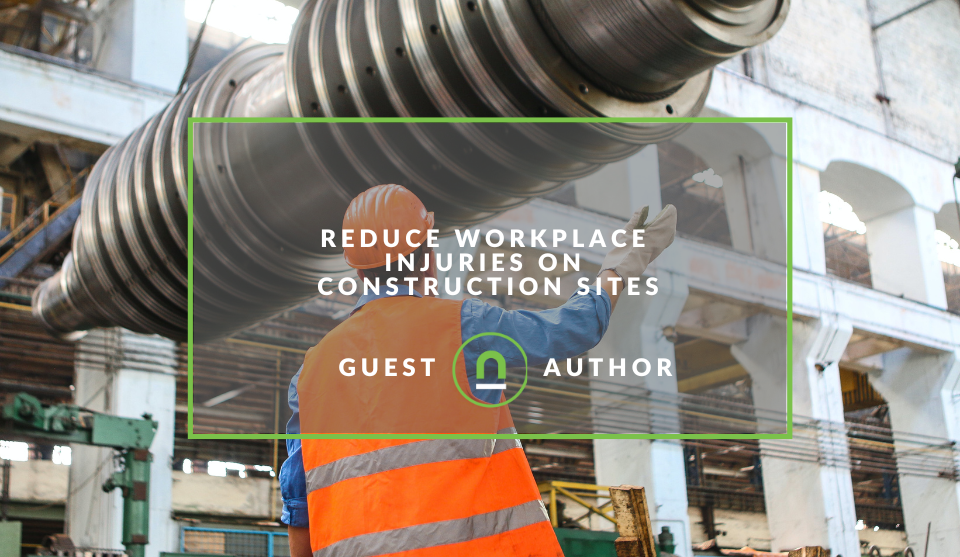Recent posts

nichemarket Advice
The South African VAT Threshold Chokehold
05 December 2025

Doctors Orders
The Difference Between SOAP Notes and DAP Notes
02 December 2025

Petrol heads
Why Load Bin Accessories Make Your Bakkie So Much Easier to Live With
26 November 2025

Alarming
What Is The Part Time Job WhatsApp Scam?
25 November 2025
Popular posts
Extravaganza
Trending Music Hashtags To Get Your Posts Noticed
24 August 2018
Geek Chic
How To Fix iPhone/iPad Only Charging In Certain Positions
05 July 2020
Extravaganza
Trending Wedding Hashtags To Get Your Posts Noticed
18 September 2018
Money Talks
How To Find Coupons & Vouchers Online In South Africa
28 March 2019
Reduce Workplace Injuries On Construction Sites
20 November 2023 | 0 comments | Posted by Mark Bingham in Constructive Criticism
Australia's construction industry stands as a cornerstone in the development of the nation's infrastructure. Despite its significance, the sector inherently carries potential risks for workers, making the need to prioritise safety on construction sites paramount. In this article, we delve into a comprehensive exploration of key strategies aimed at diminishing workplace injuries on construction sites across Australia.
Development of comprehensive training programs
The foundation of a secure construction site lies in a well-trained workforce. Implementing comprehensive training programs that cater to personnel across all experience levels is essential.
These programs should cover a spectrum of topics, including the proper handling of machinery, effective hazard identification, emergency procedures, and the correct utilisation of personal protective equipment (PPE).
Furthermore, regularly updating training modules based on industry developments ensures that workers remain equipped with the latest safety knowledge and practices.
Fostering effective communication channels
Clear and transparent communication is the linchpin in preventing workplace injuries. Establishing robust communication channels between workers, supervisors, and management cultivates a culture of safety.
Regular safety meetings, toolbox talks, and open lines of communication ensure that everyone remains aware of potential risks and is equipped to mitigate them effectively. Encouraging a feedback loop where workers can actively contribute to safety discussions fosters a sense of shared responsibility for workplace safety.
Routine equipment inspections and maintenance practices
Construction sites heavily rely on various types of equipment and machinery. Regular inspections and maintenance routines are instrumental in identifying and addressing potential issues before they escalate into safety hazards.
Adequate training for equipment operators, coupled with a schedule for routine inspections, significantly reduces the risk of accidents.
Implementing a proactive reporting system for equipment issues empowers workers to be directly involved in the maintenance process, enhancing overall safety.
Cultivation of a safety-first culture
Instilling a safety-first mindset is paramount in reducing workplace injuries. This involves creating an environment where employees feel empowered to prioritise safety without fear of repercussions.
Recognition programs for safety achievements, incentives, and transparent communication about the importance of safety contribute to building a positive safety culture.
Regularly celebrating safety milestones and acknowledging the collective effort reinforces the significance of maintaining a safe working environment.
Adherence to stringent Australian safety standards
Construction sites within Australia are subject to a rigorous framework of safety regulations and standards. Ensuring compliance with these standards is imperative for all stakeholders, including employers, contractors, and workers.
Ensuring legal compliance on construction sites is a critical aspect of minimising workplace injuries. Expert construction lawyers from Sydney play a pivotal role in navigating the intricate landscape of safety regulations and standards.
Establishment of comprehensive emergency response plans
Well-defined emergency response plans are indispensable for construction sites. This encompasses first aid training for designated personnel, clear evacuation procedures, and accessible emergency response equipment.
Regular drills and simulations ensure that everyone is familiar with the protocols and can respond effectively in case of an emergency. Integrating feedback from simulated emergency scenarios enhances the effectiveness of response plans, identifying areas for improvement and adaptation.
Fatigue management strategies
The construction industry often demands long working hours and imposes demanding schedules, leading to increased fatigue among workers. Implementing comprehensive strategies to manage fatigue, such as providing adequate rest breaks and establishing reasonable working hours, is essential in maintaining focus and reducing the likelihood of accidents.
Encouraging a culture of self-awareness regarding fatigue and fostering an environment where workers feel comfortable expressing concerns about workload contributes to overall fatigue management.
Regular and thorough site inspections
Ongoing site inspections conducted by qualified safety professionals are instrumental in identifying potential hazards and areas for improvement. Regular inspections, coupled with prompt implementation of corrective actions, contribute significantly to maintaining a safe working environment.
Establishing a transparent and accessible system for reporting potential hazards by all workers promotes a collaborative approach to site safety.
Promotion of mental health awareness
Construction workers face unique stressors, and their mental health is an integral part of their overall well-being. Promoting mental health awareness, providing resources for support, and actively working to reduce the stigma around seeking help contribute to a healthier and more focused workforce.
Incorporating mental health awareness into regular safety training programs fosters a holistic approach to worker well-being, acknowledging the interconnectedness of physical and mental health in the construction industry.
Safeguarding your staff
Safeguarding the well-being of workers on construction sites in Australia necessitates a comprehensive approach encompassing compliance, training, communication, and a steadfast commitment to fostering a safety-first culture.
By implementing these extensive strategies, stakeholders in the construction industry can collaboratively build not only robust infrastructure but also a safer and healthier future for all involved.
Tell us your story.
Would you like to write for nichemarket just like Mark has? Find out how to submit a guest post, and when you're ready, you can contact us.
Are you looking to promote your business?
Real estate businesses can create their free business listing on nichemarket. The more information you provide about your business, the easier it will be for your customers to find you online.
Registering with nichemarket is easy; all you will need to do is head over to our sign-up form and follow the instructions. If you require a more detailed guide on how to create your profile or your listing, then we highly recommend you check out the following articles.
Recommended reading
If you enjoyed this post and have time to spare, why not check out these related posts and dive deeper down the rabbit hole that is homeownership?
- Save Money To Buy A House
- How To Start House Flipping For Profit
- How To Turn Your Home Into A Smart Home
- How To Prepare For A Home Renovation
- Should You Buy or Rent a Condo?
- Tips To Determine The Market Value of Homes
Tags: Construction, Safety, Guest Post
You might also like
The Difference Between SOAP Notes and DAP Notes
02 December 2025
Posted by Che Kohler in Doctors Orders
A look at SOAP format, which remains the classic choice for healthcare professionals, while DAP notes offer more flexibility for mental health docume...
Read moreMaximising Business and Trading Opportunities Through Smart Online Strategies
07 November 2025
Posted by Marcus Nord in Money Talks
This article aims to outline for entrepreneurs, SMEs, and individual traders how better outcomes might be achieved through well-designed online strat...
Read more{{comment.sUserName}}
{{comment.iDayLastEdit}} day ago
{{comment.iDayLastEdit}} days ago
 {{blogcategory.sCategoryName}}
{{blogcategory.sCategoryName}}

